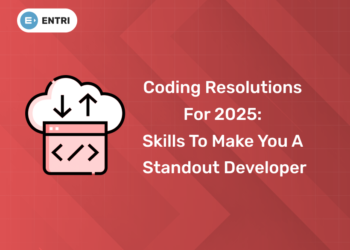Table of Contents
React Native has taken the world by storm and has been hailed as the future of hybrid app development by experts and technology enthusiasts alike. This cross-platform framework allows developers to create native apps using JavaScript, which means faster development and seamless integration of your React components with existing iOS codebases. You can even deploy your app to both iOS and Android at once! All this is made possible thanks to the JavaScript rendering engine known as JSX, which essentially allows you to write HTML tags in your JavaScript code, creating a bridge between web-based programming languages and mobile application development. The online training market is booming, and there are thousands of tutorials and videos available online that can help you learn React Native from scratch. But how do you know which ones are best? This article will guide you through the basics of React Native, as well as give you ten tips for learning the framework and landing an internship or a full-time job afterward. There are many online courses and tutorials available for learning React Native framework, but we have found 10 crucial tips for helping you succeed with your React Native training and future job hunt as well. Our goal is to help you identify key areas of concern and how to overcome them with ease so that you can start building mobile apps using React Native quickly and easily. Let’s take a look at the following ten tips to ensure that you are getting the most out of your React Native training course.
1) Expect Challenges
1: Which of the following is a JavaScript framework/library?
React is just a UI library. It doesn’t help you build your entire app and there’s no framework per se. You can use it alongside other libraries, but you have to build everything from scratch. As such, you can expect to have some challenges. There are few pre-made solutions in React like there are in other frameworks like Angular or Vue, so every piece of your app has to be custom-coded. That said… Use JavaScript: Once again, I digress into language snobbery. This time, I don’t care much for TypeScript or Babel because they simply aren’t production-ready in my opinion… Yet! But what I do love about these two tools is that they both compile down to pure JavaScript. So if you’re already familiar with JS, then you should feel right at home using either one of them. If not, then stick with vanilla JS (JSX) and take comfort in knowing that all those curly braces won’t scare away any potential employers who might be looking over your code during an interview. Familiarize yourself with Redux: Redux may seem intimidating at first glance, but trust me when I say that once you get used to it, it makes developing apps easier than ever before—especially if you’re working on a team where multiple developers are working on different parts of an app simultaneously.
2) Take Time to Learn
React Native is a hot technology right now and that means there are a lot of companies looking to hire developers who specialize in it. But just because companies need React Native experts doesn’t mean you should dive into job applications. In fact, taking an aggressive approach could be your undoing when it comes to finding employment. Make sure you take your time and check out as many options as possible before applying for any one position. Not only will that give you time to figure out which company is best, but it will also make you more attractive to potential employers who will see that you have good instincts about making career moves that ultimately benefit both parties. You may even decide to go freelance or start your own business. Either way, having patience will help you get what you want from your professional life. So don’t rush things—the longer you wait, the better off you’ll be.
3) Don’t Rush Into Applications
Many developers try to rush into applications as soon as they find a job listing, only to find out it wasn’t exactly what they wanted. Take some time to really dig into the details of a position. There’s no rule that says you have to apply immediately; take your time and choose where you really want to work before applying or interviewing. You’ll make better decisions when you choose based on what matters most to you, not just by blindly sending in an application for any position available. Of course, if you are having trouble finding a job in general, don’t be afraid to reach out directly. Send in applications/interviews if necessary, but also reach out directly if there is something that appeals specifically to you. The worst thing they can say is no—and at least then you know! Sometimes employers even offer additional perks for people who come to them instead of them going after you. And since companies typically receive hundreds of applications, even small differences like this can go a long way. It’s worth it to spend time crafting a personalized message over simply filling out an application form. Make sure your resume has relevant keywords: While employers might scan through dozens (or hundreds) of resumes looking for candidates who fit their requirements, odds are high that many won’t get past keyword searches without being flagged as overqualified or otherwise inappropriate. When writing your resume, use relevant keywords from the job description in your title and summary sections so potential employers will notice you more easily.
Grab the opportunity to learn Python with Entri! Click Here
4) Work on Code Every Day
A big part of learning React Native is getting comfortable enough to code every day. This can be a challenge when you’re just starting out and it feels like there are so many things to learn. Even if you’re not sure what you’re doing, practice will help improve your skills and get you thinking in new ways. And don’t worry about messing up; those are some of my favorite mistakes—learning from them is key to success! If you have time, though, start simple and work on something that interests you. If a project feels too difficult or intimidating at first, break it down into smaller chunks until it seems manageable.
5) Stay Confident and Determined
If you can be confident and determined, it’s easier to learn React Native. You don’t have to be an experienced developer or computer expert, but if you are positive and understand why you want to do it, it will come easy. Anybody can learn something new if they’re willing to put in a little effort, so think of yourself as learning a new skill like cooking or golfing – not something you might fail at. Keep your motivation high and follow through!
6) Get Together With Other Learners
Whether you’re taking an online course or a traditional one, it pays to meet up with other learners. Being able to discuss your learning process and questions can help you work through problems faster. Plus, when people are having trouble grasping certain concepts, it helps if they have people around who understand what they’re going through. And if they’re really frustrated? Take them out for ice cream. You get better as a learner when you surround yourself with others who also want to improve. Our advice: make friends on campus, in online forums, and in your tech meet-ups!
Learn to code from industry experts! Enroll here
7) Select a Reliable Training Provider
The web is a wonderful place, but it can also be filled with shady characters and unscrupulous providers. Because of that, we recommend finding a training provider who is recommended by someone you trust. Make sure to look online, ask friends and colleagues if they have any suggestions, or check out some reviews online. Once you’ve found a good option, call them up and get more information about their program.
8) Hire Good Coders as Mentors
They can help you get up to speed on best practices, teach you how to use libraries and tools, and offer a wide variety of insights based on their experience. They can even point out potential pitfalls before they bite you. These benefits are particularly true if you’re learning a new language (like Python or Ruby), framework (such as Django or Rails), or niche programming technique (such as React). When looking for a mentor, make sure they have some experience teaching others; it’s easier to learn from someone who has been in your shoes. You may also want to pay attention to reviews on sites like Clarity and Stack Overflow.
9) Start From Scratch By Doing Exercises Yourself First
If you’re working on a mobile app, especially one in React Native, start by joining a local Facebook developer group. They usually meet at least once a month to discuss best practices and learn from one another. If there isn’t one in your area, consider starting your own. It helps you make connections and get to know like-minded people. Most importantly, it gets you involved so that when jobs do come up at tech companies looking for React Native developers (which they do), you won’t be competing against hundreds of other applicants who aren’t involved in groups.
10) Join the Facebook Developer Group
Although React Native development doesn’t have a lot of mainstream followers yet, you’ll still find a number of groups dedicated to it on Facebook. You can post about your new app or game and make new connections in these groups, but be sure to follow Facebook’s Community Standards when doing so. There are two types of Facebook Developer Groups: public and closed. Public groups welcome anyone while closed groups are invite-only. The best way to make sure that you’re part of a thriving community is to join an active group—and not just one on react native training but one more specific like react native android. If you are interested to learn new coding skills, the Entri app will help you to acquire them very easily. Entri app is following a structural study plan so that the students can learn very easily. If you don’t have a coding background, it won’t be any problem. You can download the Entri app from the google play store and enroll in your favorite course.











